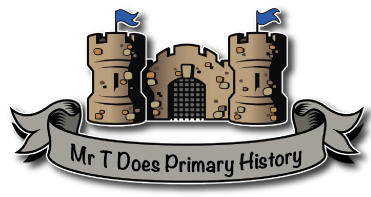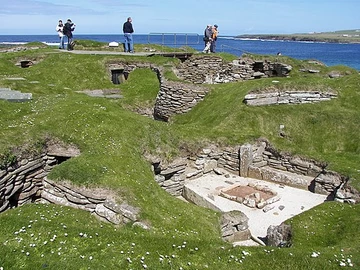Before the topic begins:
It’s really important to consider what the children’s experience of history is from their previous topics in school and what they may have seen beyond. Once I have that in mind, I can adapt my plans to suit.
For my own work (year 3), I know they’ve learned about:
– remembrance and the story of the poppy (Moina Michael) and the local memorial
– aspects of knowledge related to Black History Month
– castles using Skipton castle as a central focus
So, in the first couple of lessons I’ll be focusing on chronology to build up an overview and establish the use of certain terms:
– what a period of history is
– what BC means and how it is structured (larger number = further in the past)
– the names of those periods and their duration and position in terms of children’s previous knowledge
The next steps:
1) Exploring the life and some of the achievements in each period
2) Identifying how we know about this period of history given the limited evidence base
3) Ensure key knowledge is displayed and referred to consistently
4) Vocabulary is selected carefully for relevance, defined and applied
Key knowledge and vocabulary to include:
Once the structure of the topic is clear, we need to focus on the end points of what the children will have learned through the topic. I’ve begun to map them out like this to make it rally clear and act as a focus for staff during lessons.
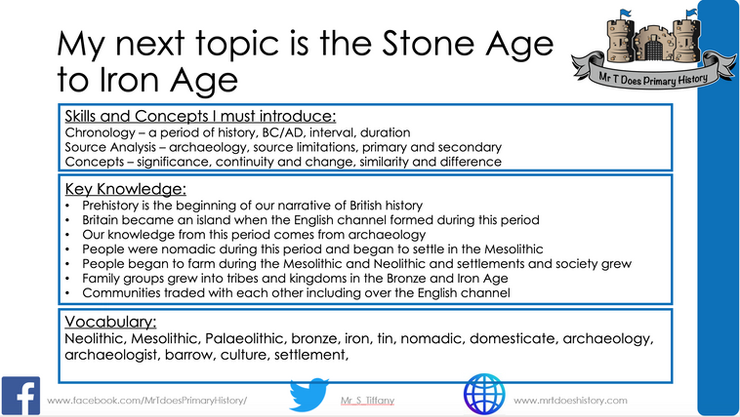
Each of these piece of knowledge and vocabulary will be focused on in lessons and reinforced to embed. The knowledge either links to the wider history curriculum such as the mentions to beginning of the narrative of British history and concepts such as trade and society. The aim of this is to guide the learning and act as an anchor point to standardise learning should teachers change year groups or be new to school.
The vocabulary will be reinforced in each lesson and displayed. The aim being to promote its use in the correct context and rewards given for children attempting to use it in their oral or written work. It will also be used on the working wall with word mats for those that need prompts in front of them.
Lesson 1
LO To understand the periodisation of history
This is one of the most fundamental changes from history in Key Stage 1 to 2. The children move from learning about individual events, the duration of people’s lives and key dates and other occasions marked (remembrance or Black History Month). To this end, if we don’t actively teach the definition of a ‘period of history’ and use it in context, the children find it really challenging to understand the structure of the narrative of the past and both how and why it’s broken into those periods. I quite often use the principle of a story book broken into chapters, which is a principle I gained from the brilliant Ian Dawson.
Throughout this lesson, the children have these terms reinforced and we actively make chronological links between their existing knowledge base to establish the comparative position of each ‘topic’ on the overall narrative structure. It also allows children to understand the difference between an event, life of a significant individual etc. This uses the progress tracker PPT linked to the picture below.
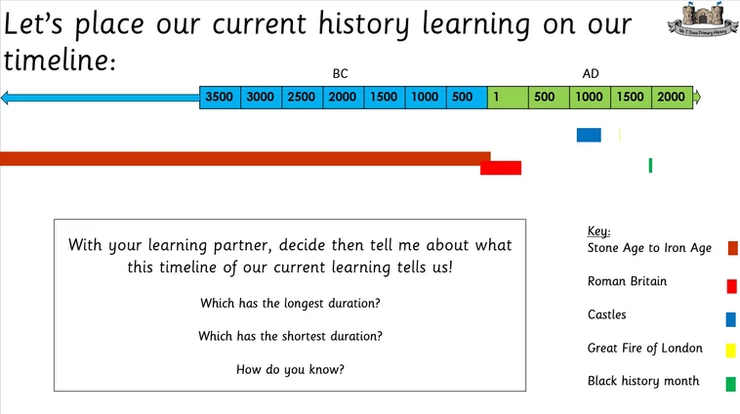
The best timeline I’ve found is available on Archaeosoup Productions website. Every child can explore each of the periods of history using either their names or colours. Following this exploration and initial discussion around what the children are familiar with, key vocabulary is introduced and the slide is shared as a handout to ensure the children used them in the lesson and could refer to them when needed – it will be used consistently throughout the entire topic.
Duration is absolutely key
Children are often very familiar with sequencing during a chronology lesson but to truly understand periodisation, duration is fundamental.
Which period is the longest?
How do you know?
Whether children are familiar with, or able to pronounce, the periods of the Stone Age, the duration stands out very clearly and the red Palaeolithic has the longest. This concept is the focus for the remainder of this lesson and can be taught by making a human timeline (use as much space as you can!) or border paper to illustrate the duration of each period of our topic in question.
Summary of the children’s learning
This is a chance for children to define their children’s learning and the knowledge and vocabulary that they’ve gained. It is built on by using the new knowledge and vocabulary gained in each lesson.
On the display board, the overall timeline narrative is placed with period labels. The work from following lessons is added to this.
Lesson 2 – The Palaeolithic
After establishing this overall narrative and the concept of periodisation, we focus on teaching period by period to reinforce this. Beginning… well at the beginning – a very good place to start!
Lesson Structure – Prediction
The children already know this has, by far, the longest duration of any period of human history and some key information about it using the period posters from my Stone Age to Iron Age pack. We are teaching this as an overview therefore choose three aspects of life to track through to learn about continuity and change/similarity and difference. They are: homes, tools and food as they are accessible to all children who have some wider knowledge of them that can be tied in.
After discussing the poster again, the children are challenged to predict what they think life would be like using labelled pictures. The aim is to ensure the children are comfortable ‘having a go’ and making theories in history. As they work, the adults question about why they have chosen to do it that way and ensure they’re focusing on the key aspects of life. It’s also a way to address misconceptions (one child asked about dinosaurs and knew they were much earlier than man but were struggling with how to explain this).
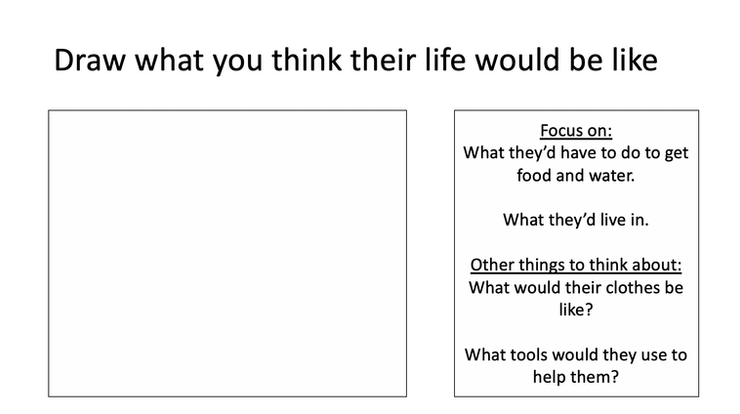
How do we learn about prehistory?
One of the objectives children need to know is how our knowledge about the past is gained and how prehistory lacks primary written sources. So, we explore the evidence base and to what extent our theories were correct and mistakes we made. The text is kept to show how and where these finds came from. This task is completed again using archaeology for tools and the children are encourage to reason how tools were made and would be used. They asked really interesting questions about how people would know which plants could be gathered safely amongst others.
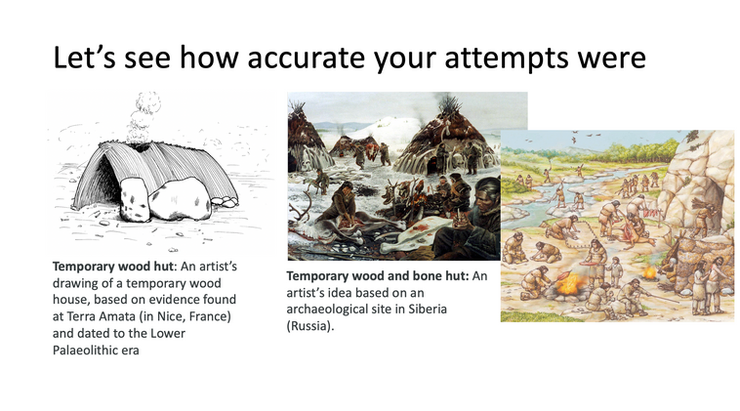
The display board will contain these findings so we can draw on this to look at continuity and change and similarity and difference to ensure easy comparison and an effective reference point.
Lesson 3 and 4 – The Mesolithic and Neolithic
This lesson focuses on creating clear links between the periods of prehistory to explore the concept of continuity and change. The children explored each of the examples of tools and were guided to look closely at how the tools had stayed the same but also changed through periods.
In the lesson, we used specifically British tools and mapped where they were found, but these below are rights free examples.
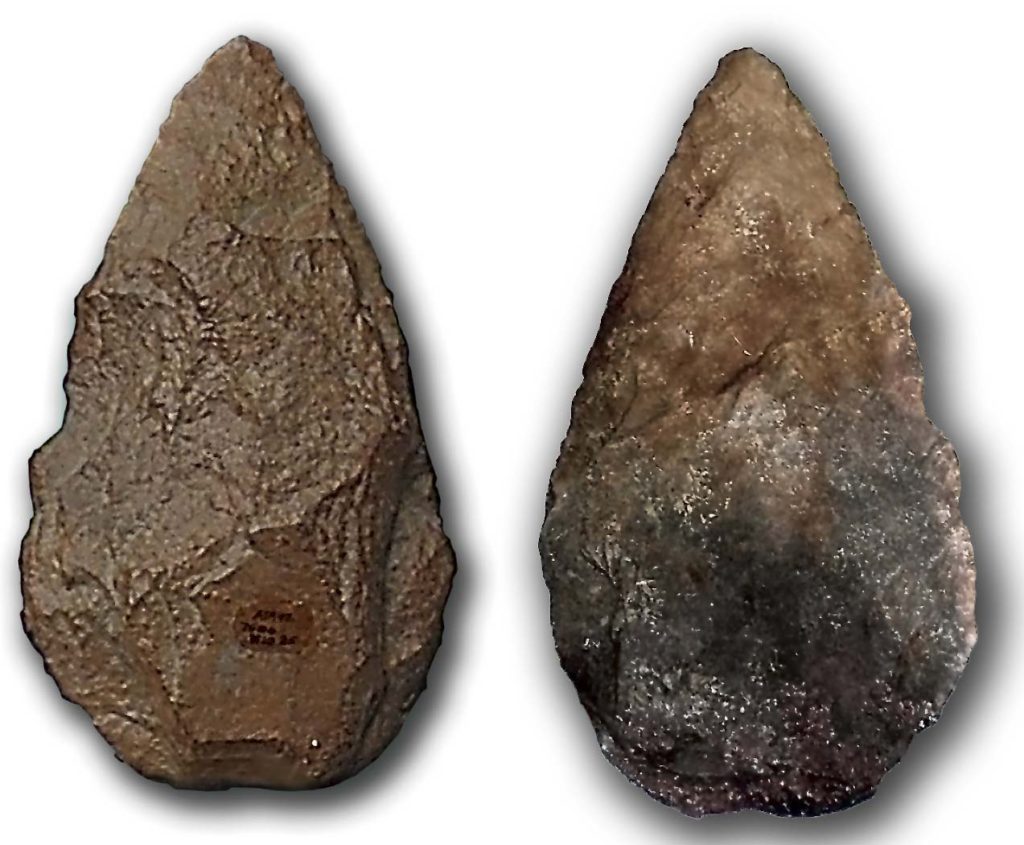
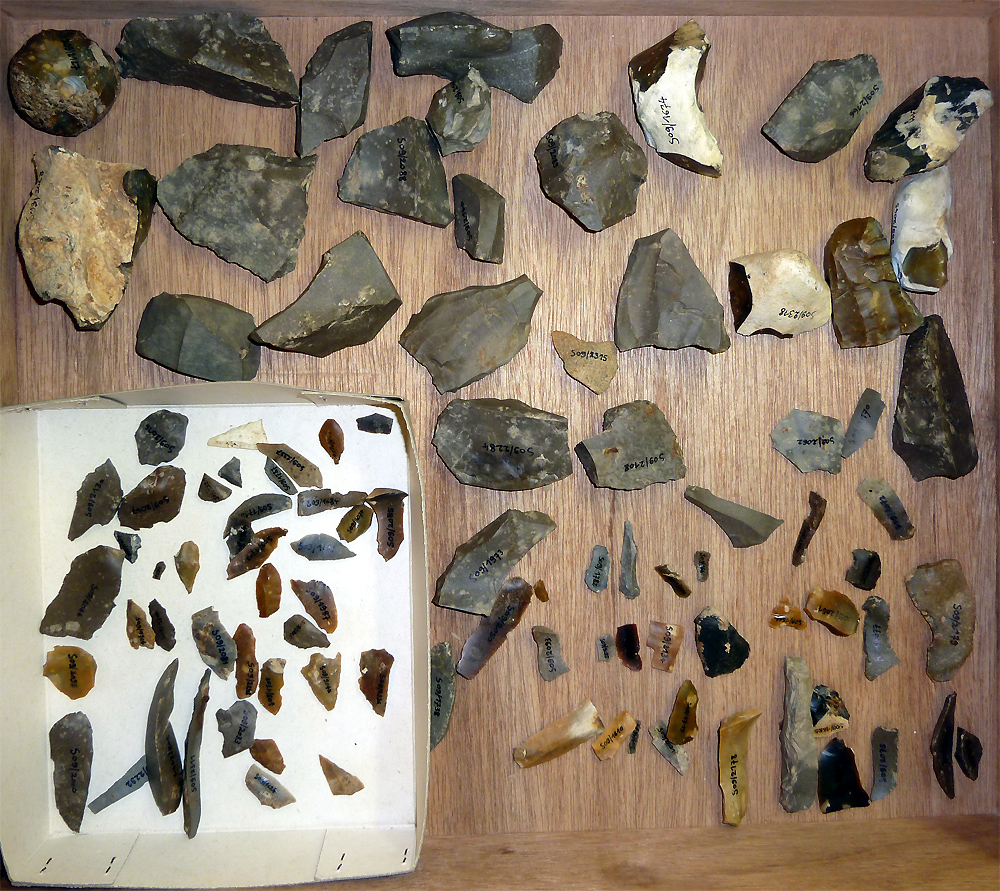
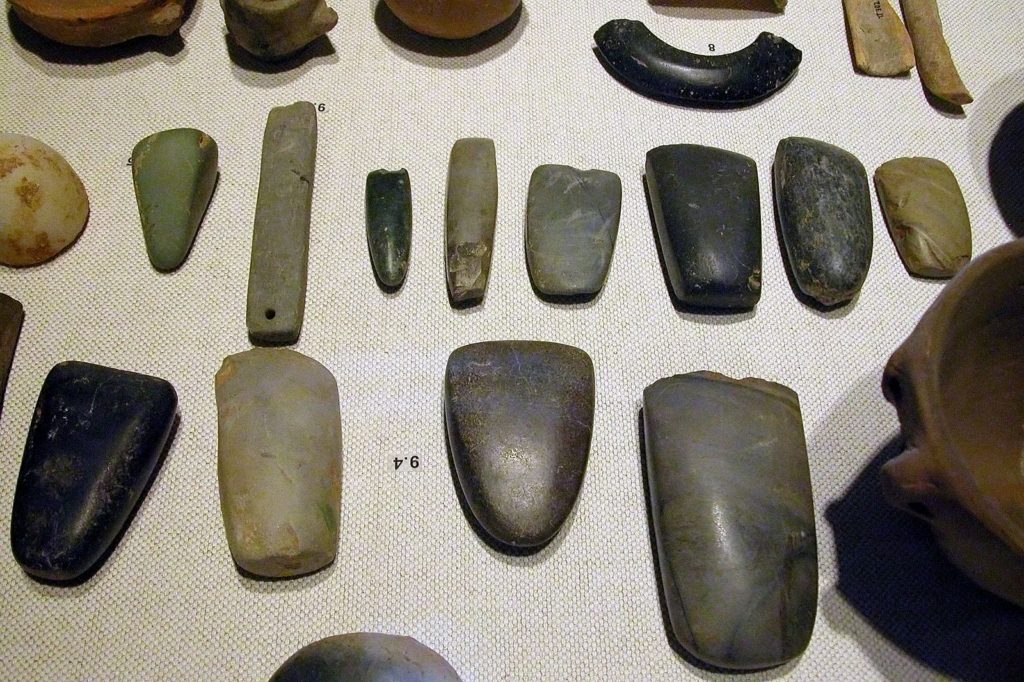
The children were able to identify the increased diversity in the Mesolithic and how the tools had become ‘smoother’ in the Neolithic. Because this is an overview topic, we don’t have time to study specific traits in depth but rather we focus on a number of key changes that impacted people’s lives. This task was repeated with the ‘homes’ that the people lived in. Alongside the children’s written work, we use the BBC teach videos (free on Youtube) to support further understanding and to give additional examples of how life changed through the periods and to prompt them to try and make additional links.
The discussion focused on how the changes would impact on people’s lives and whether they would improve them or not. We then thought about significance and which change that we looked at was the most significant for human history. To do this, we emphasised the idea of: without…, what wouldn’t we have/be able to do?
The conclusion to this part of the lesson was an answer to the following question:
Which period of the Stone Age would you rather live in and why?
As part of this, the emphasis is on the children’s ability to use evidence and explain their thinking using the knowledge they have gained. In addition, they can ask further questions that they’d like to find the answer to that would help them better answer the question.
Lesson 5 and 6
The final focus for the topic was significance and what makes Star Carr significant. We recapped on what and how we can learn from the archaeological sites and findings that have been made on them. This reinforced the ideas of how we can learn about the past and use questions to further our understanding.
Next, we move on to the Bronze and Iron Age to tie in our next topic on the Roman invasion, conquest and impact on Britain.
